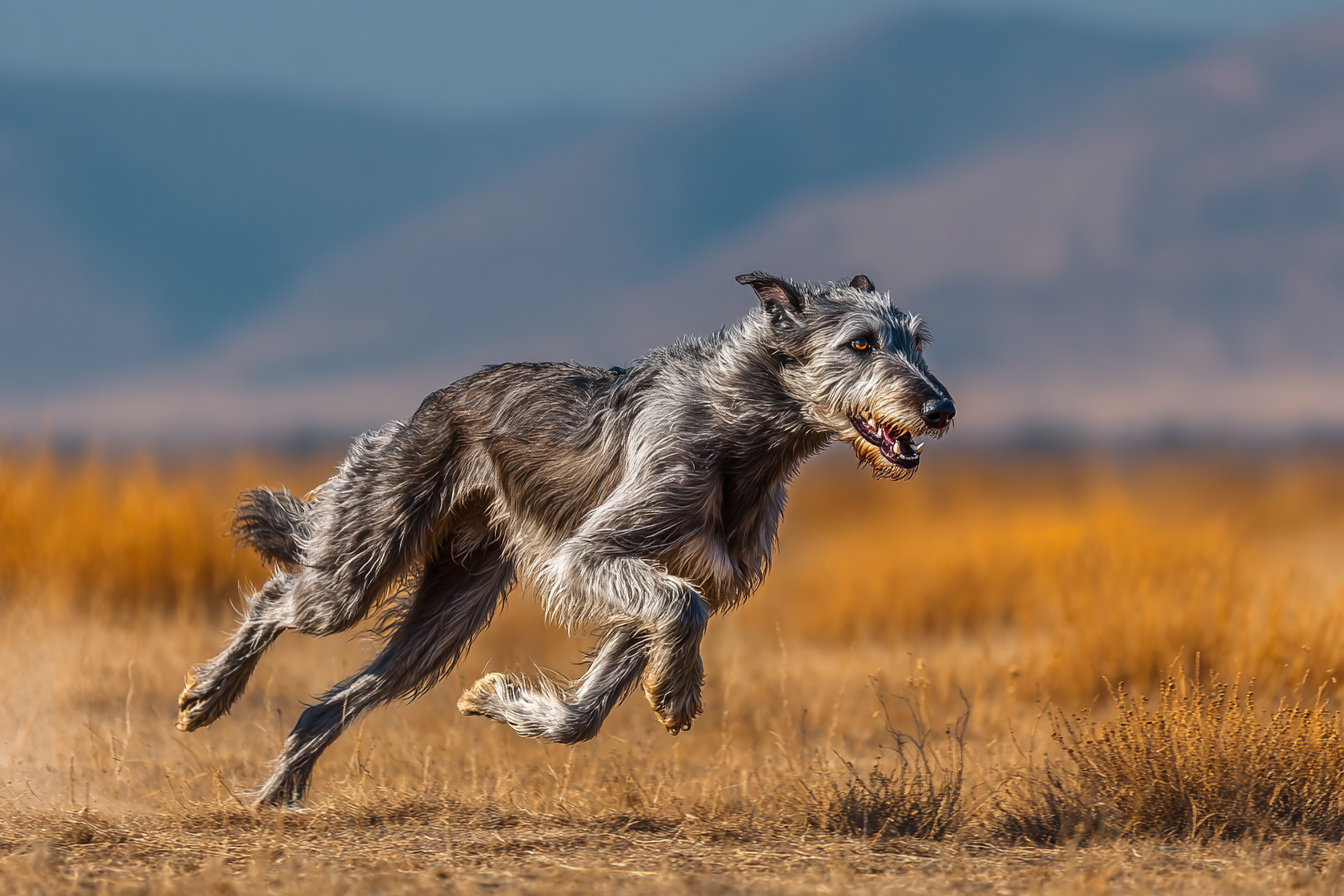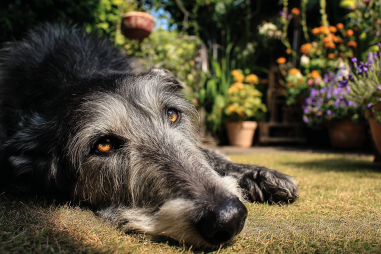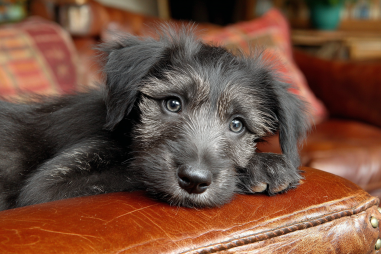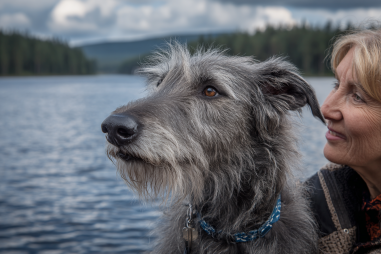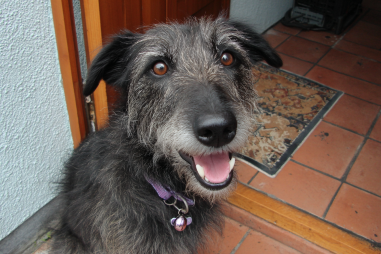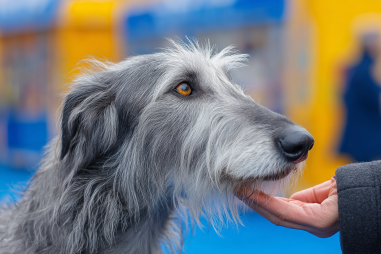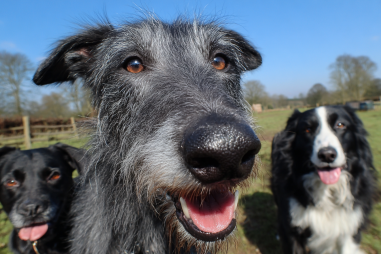Scottish Deerhounds are majestic dogs known for their elegance, gentle nature, and historical roots as skilled hunters. Like all dogs, they require regular exercise to maintain their health and happiness. However, due to their size and breed characteristics, their exercise needs are unique. Understanding these needs can help you keep your Deerhound active, engaged, and in great shape for years to come.
Scottish Deerhound Energy Levels
Scottish Deerhounds are a large and athletic breed originally bred to chase deer over long distances. Despite their hunting heritage, they are not high-energy dogs in the way some smaller terrier breeds are. Rather, they tend to have moderate energy levels, meaning they enjoy bursts of activity followed by long periods of relaxation. Typically, a Deerhound will be calm and laid-back at home but will appreciate opportunities to stretch their legs when introduced to the outdoors.
This moderate energy level means that their exercise requirements are manageable for most owners, but it’s important to strike a balance. Too little activity can lead to boredom and restlessness, while too much high-impact exercise, especially when they are young, might cause joint strain. Tailoring exercise to their energy profile will ensure they stay well-rounded, both physically and mentally.
Ideal Daily Exercise Types
When it comes to keeping your Scottish Deerhound active, a combination of different exercise types works best. They need a mix of aerobic activities that promote cardiovascular health and light-intensity movement that respects their gentle disposition. Here are some ideal daily exercises for your Deerhound:
- Leisurely walks: Daily walks of about 30 to 60 minutes are perfect for maintaining their overall fitness. They enjoy sniffing around and exploring, so keep the pace relaxed rather than brisk.
- Off-leash running: Deerhounds love to sprint. Providing a safe, enclosed space where they can run freely for 15 to 30 minutes a day taps into their natural instincts and helps burn off energy.
- Play sessions: Interactive games like fetch or gentle tug-of-war allow for bursts of activity while strengthening your bond.
- Hiking or nature walks: Taking your Deerhound on trails can stimulate them mentally and physically, fulfilling their need for new sights and smells.
Consistency is key. Try to schedule exercise sessions at the same times daily to help your dog anticipate activity and stay balanced.
Benefits of Regular Activity
Regular exercise is not just about keeping your Scottish Deerhound slim or physically fit. It plays an important role in their overall well-being with benefits including:
- Improved cardiovascular health: Moderate aerobic exercise strengthens the heart and lungs, helping your Deerhound live a longer and healthier life.
- Weight management: Maintaining a healthy weight reduces the risk of joint problems, which is crucial for such a large breed.
- Mental stimulation: Physical exercise helps reduce anxiety and negative behaviors caused by boredom.
- Stronger bond: Sharing exercise time builds mutual trust and affection between you and your dog.
- Enhanced muscle tone and joint flexibility: Keeping muscles engaged supports the Deerhound’s long limbs and inhibits stiffness or arthritis.
By ensuring they get a good amount of exercise daily, you are actively contributing to your Deerhound’s happiness and longevity.
Combining Exercise with Mental Stimulation
Exercise isn’t just about the body—it also feeds your Scottish Deerhound’s mind. Mental stimulation is just as essential for preventing boredom and encouraging good behavior, particularly during indoor or low-activity periods. Here are some ways to combine physical activity with brain exercise:
- Interactive toys: Puzzle feeders or treat-dispensing toys encourage problem-solving while your Deerhound moves around.
- Training sessions: Short but consistent obedience or trick training helps engage your dog’s mind while providing light exercise.
- Scent games: Hide treats or toys around the yard or house and allow your dog to use their keen sense of smell to find them.
- Agility or obstacle courses: Gentle agility activities adapted to their size improve coordination and mental focus.
Integrating these activities into your dog’s routine satisfies their natural curiosity and need for purpose, making exercise more enjoyable for both of you.
Exercise Safety Tips
Because Scottish Deerhounds are such large, slender dogs, exercise should always be approached with safety in mind. Here are several important tips:
- Warm up and cool down: Begin exercise with a slow walk before any running or intense activity and finish similarly to prevent injury.
- Avoid excessive jumping: Their joints are more vulnerable to damage, so avoid too much high-impact jumping, especially during puppyhood.
- Watch out for heat: Their thick coats mean they can overheat easily. Exercise early mornings or late evenings in hot weather.
- Leash rules: When running or walking near traffic or other dogs, keep your Deerhound on a leash unless in a secure, enclosed space.
- Check the ground: Soft grass or dirt is better than hard pavement to reduce joint stress.
- Regular vet checks: Ensure your dog’s joints, heart, and overall health are monitored to adjust exercise needs appropriately.
Being cautious will help you avoid injuries and keep your Deerhound comfortable when being active.
Managing Energy in Older Dogs
As your Scottish Deerhound ages, their exercise routine will naturally change. Senior Deerhounds tend to slow down, and their joints may become stiffer, requiring some adjustments:
- Shorter, more frequent walks: Break up exercise into several shorter sessions to minimize strain.
- Low-impact activities: Swimming is an excellent option for older Deerhounds, offering cardio benefits without pressure on joints.
- Maintain mental engagement: Keep training and puzzle games in their routine to support cognitive function.
- Monitor signs of discomfort: If your dog seems reluctant to exercise or shows signs of pain, consult your vet.
- Provide comfortable rest areas: Orthopedic beds can help them recover after exercise sessions.
Listening to your dog and tailoring their activity as they age ensures they remain happy and mobile without overexertion.
Enjoying an Active Life Together
Meeting the exercise needs of your Scottish Deerhound is a rewarding part of responsible pet care. By providing a balance of physical activity and mental stimulation, you promote a lifetime of health, happiness, and companionship. Whether it’s a brisk walk, a playful run in an enclosed field, or an engaging training session, your Deerhound will thrive with thoughtfully planned daily exercise. Remember to always consider your dog’s age, health, and individual preferences as you develop a routine, making fitness a joyful part of every day for your elegant hound.

